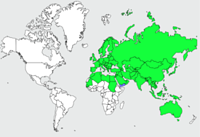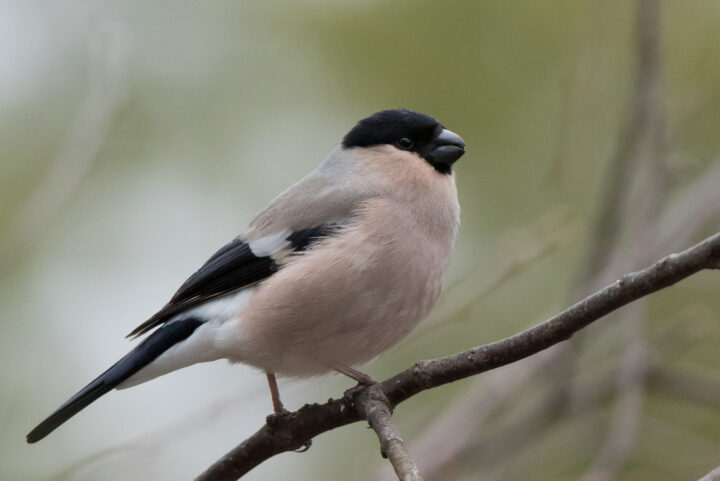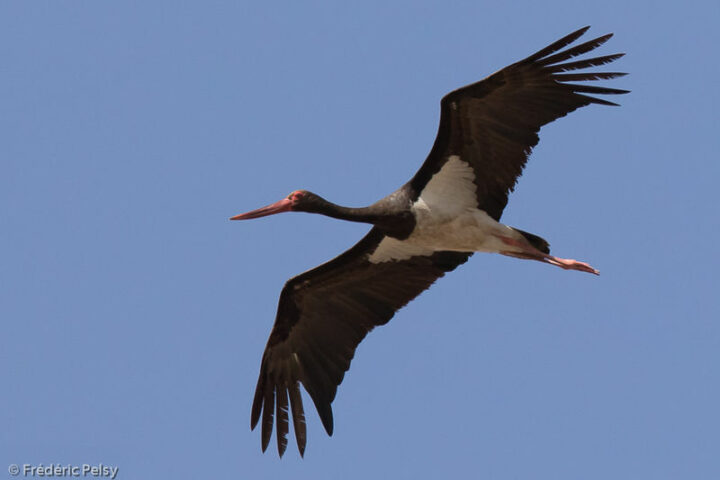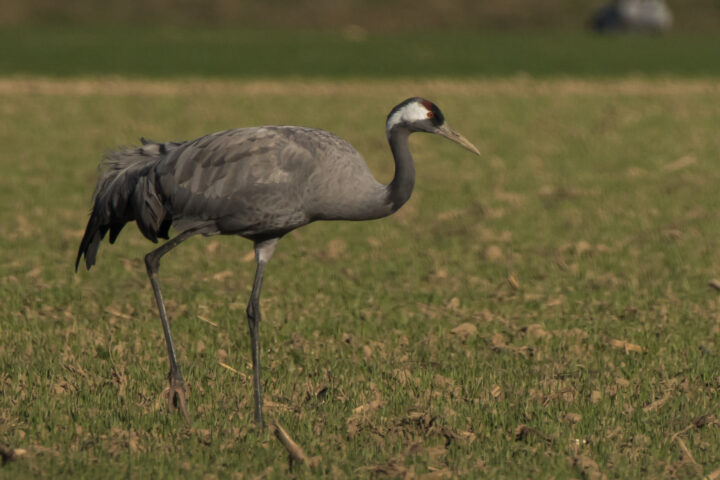COmmon Kingfisher
Alcedo atthis
Classification
- Order: Coraciiformes
- Family : Alcedinidae
- Genus : Alcedo
- Species : atthis
binomial name
- Linnaeus, 1758
biometrics
- Size: 16 cm
- Wingspan : 24 to 26 cm
- Weight : 30 to 45 g
longevity
15 years
DISTRIBUTION

vocalisation
The usual call of the European Kingfisher, or at least the one that is best and most frequently heard, is a strong and incisive “siii” that is somewhat reminiscent of the call of the Common Goldfinch, but much more powerful and repeated. It is by this call that the bird announces itself when it arrives in flight like a blue arrow above the water.
The song is a succession of shrill whistles of slightly varying frequency.
A high-pitched, vibrating “tri tri tri tri tri…” is used to impose on a fellow bird or to repel an intruder.
The young beg at the nest with incessant rolled cries of low tone.
IUCN CONSERVATION STATUS

share
IDENTIFICATION
The European Kingfisher is a small Old World alkedinid with blue and russet plumage, like many members of the family, and the only one to have this appearance over most of its Eurasian range.
The sexual dimorphism is weak. The adult has the entire upper parts blue, particularly bright blue from the mantle to the supracaudals. The scapulars and the wing covers are darker, shaded with green and punctuated with light blue. The lower parts are bright red except for the white to cream throat. The head pattern is remarkable. The upper surface is blue shaded with green and clearly speckled. The blackish loral area includes a reddish patch. The eye is dark. The reddish auricular zone, bordered of blue below, is typical of the species. On the sides of the neck a white collar is outlined.
In mating season, the dagger-like bill is entirely black in adult males, black with the base of the lower mandible orange in adult females. The small legs, typical of the family, are red-green.
The seven subspecies described show only minimal differences in size and color.
The juvenile is overall duller, whether the upper parts, less blue and more green, or the lower parts of a less bright red with at the beginning the breast darkly marked with brownish. The blackish bill has a whitish tip and the legs are pinkish.
HABITAT
The Kingfisher of Europe frequents the edge of the waters that they are stagnant or current. These waters can be very diverse, but they must especially be very fishy, rich in small fish of a size adapted to its own. The water must be clear enough for him to fish efficiently. It also needs a riparian vegetation on which it can stand in search of its preys, even if it can occasionally practice a hovering of location. The environment can be natural or completely artificial. Thus, the numerous ballast pits resulting from the extraction of aggregates, recolonized by vegetation and stocked, constitute new territories for the species.
For the cavernicolous reproduction typical of the species, the kingfisher must have at its disposal easily accessible “fronts of size”, quite frequent along running waters, in which it will be able to dig with its beak the horizontal tunnel of nesting which it will widen at its end to accommodate the nest. The substrate must be favorable to the digging but neither too crumbly to hold in time, nor too stony. A sandy-silty substrate is a kind of ideal.
Along the rivers, the kingfisher usually finds shelter and cover. However, this is not always the case for water bodies. There may be a distance between the fishing areas and the nesting site. Kingfishers are capable of finding a suitable terrestrial nesting site up to a few hundred meters from the water by flying overland.
Sedentary populations remain on the same waters all year round and it is the erratic young of the year that ensure the dispersion of the species and the mixing of the population. On the other hand, for the populations subjected to a continental climate with cold winters, migration is de rigueur. The wintering areas are distinct from the nesting areas and the migratory routes can reach several thousand km. In this season, these kingfishers are willingly coastal and frequent rocky shores, estuaries, lagoons, ports, mangroves, etc..
THREATS – protection
The species, widely distributed, is not globally threatened. It is even reported to be increasing locally, for example south of the Baltic, perhaps due to the effect of global warming. However, it is conceivable that with an ever-increasing human footprint on nature, a certain number of populations will decline in the long term.
It is a species sensitive to the conditions of its environment. The increasing pollution of rivers associated with a lack of rainfall has a negative impact on the fish resource, its main food. In addition, all the developments that affect the naturalness of the river banks have a negative impact on the availability of nesting sites.
Climatic hazards are known to severely affect exposed populations. This was the case, for example, during the winter of 1962-63 which was exceptionally cold in Europe. Sedentary kingfisher populations were decimated. Fortunately, after such an accident, they recover thanks to the survivors and find more or less quickly their original level.
Source : oiseaux.net
Retrouvez toute la fiche espèce rédigée par Jean François
La Gallerie








Find all the walls
15 walls
Place
14-16 Penpoll Road,London
Fresque
Hummingbird by Claire Ward ThorntonPar
Claire Ward-ThorntonOiseau
Ruby-throated HummingbirdPlace
Aknīste – Gārsene – Ausmas,LV-5218 Gārsene,
Lettonie Zemgale
Fresque
Black storksPar
Anda LāceOiseau
Black StorkPlace
Bruxelles BelgiqueFresque
Turtle DovePar
Aurore VegasOiseau
European Turtle DovePlace
Jarrestraße 20,22303 Hamburg,
Allemagne
Fresque
COMMON KESTRELPar
Hanadi ChawafOiseau
Common KestrelPlace
Lisbonne,Portugal
Fresque
Vulture & EaglePar
Tatiana SaumOiseaux
Spanish Imperial Eagle, Cinereous Vulture.Place
Kišpatićeva ul. 12,10000,
Zagreb,
Croatie
Fresque
Common KingfisherPar
Chez 186Oiseau
Common KingfisherPlace
1 Boulevard de Dresde,67000 Strasbourg,
France Grand Est
Fresque
Eurasian CurlewPar
Philippe BaudelocqueOiseau
Eurasian CurlewPlace
Tabor,1000 Ljubljana,
Slovénie
Fresque
Little TernPar
ŠkartOiseau
Little TernPlace
Roodborststraat 18,3083 WB Rotterdam,
Pays-Bas
Fresque
The European RobinPar
Marloes de KiewitOiseau
European RobinPlace
35 Rue du Général Leclerc92130 Issy-les-MoulineauxFresque
Five birds by MantraPar
MantraOiseaux
Common Kingfisher, Barn Swallow, European Goldfinch, Eurasian bullfinch, Lesser Spotted Woodpecker.Place
Place Seigneur de Monlezun,Sempesserre
Fresque
The Red PartridgePar
Adèle RenaultOiseau
Red-legged PartridgePlace
Ss Cyril & Methodius 44,Skopje 1000,
Macédoine du Nord
Fresque
Egyptian VulturePar
Dorotej NeshovskiOiseau
Egyptian VulturePlace
2 Place des Marseillaises,Marseille
Fresque
6 Mediterranean and American birdsPar
FikosOiseaux
Eurasian Hoopoe, Western Black-eared Wheatear, Blue Rock Thrush.Place
299 Avenue de l’Adour,Anglet
Fresque
11 migratory birds of the Basque coastPar
MioSHeOiseau
Common cranePlace
84 Rue du Chemin Vert,Boulogne-sur-Mer





















